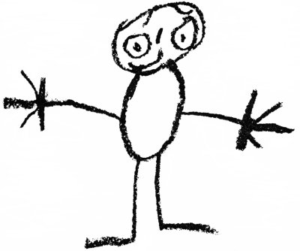Why does my child have difficulty drawing or colouring at kindy?
How Occupational Therapy can help with drawing and colouring skills.
Some common questions we hear from parents are:
- Why don’t I see my child’s artwork on the walls?
- Why does my child’s kindy teacher comment on how they hold their pencil – won’t they just grow out of it?
- Should my child be interested in drawing or colouring?
- My child just wants to run around at kindy, can they wait to learn to draw at school?
These are some common questions we have been getting asked at the recent parent workshops the Cooee Occupational Therapists and Speech Pathologists have been attending over the northside of Brisbane.
So, is it important for your child to learn to draw and colour at kindy?
It definitely is.
Drawing and colouring are the skills we develop just before we start to write. Drawing and colouring helps us develop appropriate grasp patterns, wrist position, wrist and finger movements and the ability to draw all types of lines that will enable us to write letters when our children go to school.
For example, before we can write an ‘a’, we first need to be able to draw a horizontal, vertical and diagonal line, just to be able to write an ‘a’! Through drawing pictures of ourselves, houses, trees, animals and various other fabulous things our children think of, they learn how to draw all different lines and shapes in preparation for drawing the shape of letters.
When we colour, we develop our ability to move the pencil in a controlled fashion by developing the little muscles in our fingers and wrist. As we do this we learn to move the pencil with only our fingers allowing us to draw smaller lines.
Here is a progression of drawing a person – from early (2 yrs) through to more advanced (prior to school entry)

Face + Eyes + Mouth + Legs

Now with hair + nose + teeth! (still no body)

Full Person
What to look for to check your child is ready for writing:
- Ability to draw a vertical and horizontal line
- Ability to draw a circle, square and starting to experiment with triangles
- Roughly colouring inside the lines and ability to change colours while colouring for different parts of the picture
- Ability to draw a person with 5-7 features (head, body, arms, legs, eyes, nose, mouth)
- Will attempt to trace or copy their name
If you are concerned that your child isn’t drawing or colouring or isn’t showing an interest or avoids using a pencil/crayon, call our occupational therapists or book online today and they can discuss what might be happening for your child and provide an assessment.
